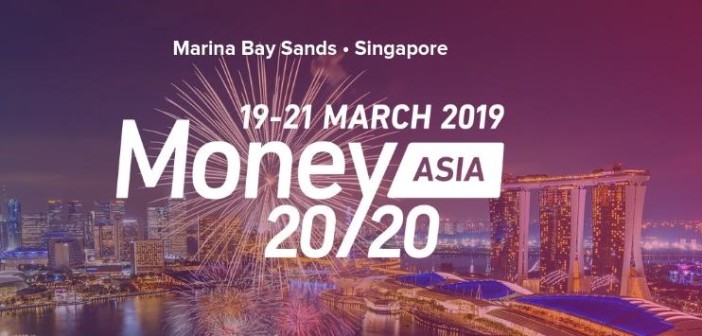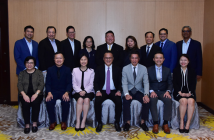
Digital connectivity powered by today’s internet has, without question, opened up exciting opportunities for businesses and customers alike.
In the ASEAN region where the population is 655 million strong and the economy projected to be world’s 4th largest by 2025, and with more having mobile phones than bank accounts, what are some of these opportunities and how are businesses responding?
One is tapping into the segments where a lack of transparency and supply of capital are sources of considerable friction in financial transactions.
Financial inclusion -or serving the unbanked and the underbanked – is an important goal of today’s FinTech innovations. By exploiting technologies that can be deployed on mobile phones in the hands of millions, businesses can reach previously untapped market segments. There are opportunities to offer more efficient and easier loan application and approvals for small businesses, more transparent and cheaper remittances for individuals to make cross-border money transfers.
At Money 20/20 Asia held in Singapore (19th – 21st 2019, Marina Bay Sands) we hear about how the financial services are being transformed by “the challengers” in FinTech, and how incumbent financial institutions are responding to these challenges.
The Challengers
Today’s payments services are increasingly offered by non-financial service firms – aviation, e-commerce and social network, and ride-hailing – who are leveraging their core customer base to move into financial services.
- Aviation – AirAsia is a household name in the region, which began when its founder spotted a gap in the market for low cost aviation travel. Today, it extends its approach of serving the untapped market to the financial services. Presenting on “Flying into Fintech”, Group CEO Tony Fernandes said they aim to bring transparency and value to the unbanked, as well as banked in Southeast Asia, with BigPay. “There are a lot of similarities between AirAsia and the financial technology world. By using BigPay, remittance charges can be reduced and will make travelling much easier,” Fernandes said.
- E-commerce and Social network – Tencent is another well-recognised name in the region, with roots in e-commerce and social network. WeChat and WePay are proven successes in delivering a cashless ecosystem in China, with monthly active users of 1 billion (as of 2018).
Highlighting Tencent as a technology company that connects customers to its ecosystem, Wendy Sun (Senior Director, Tencent) elaborated on “Tencent’s FinTech Strategy & expansion overseas”. Not only is Tencent extending the ecosystem beyond payments – to wealth management and use cases such as ticketing and food delivery, it is also expanding outside of China, with the 2018 launch of WeChat in Malaysia.
- Ride Hailing – Grab Cab is no stranger to many in Asia. Building on its success in growing the ride-hailing market in the region, its GrabPlatform – a suite of APIs for partners to access components of Grab’s technology like logistics and payments – is part of its open platform strategy to build Southeast Asia’s first everyday superapp. Grab Financial, the FinTech platform within the Grab ecosystem is the first FinTech player with access to e-money licenses in Southeast Asia’s six largest economies. What lies next includes microloans and micro-insurance offerings to support Small Medium Enterprises in Southeast Asia.
The Incumbents
What are the innovation strategies of the incumbent banks?
Incumbent banks have created innovation and fintech groups with the aim to develop new value system and embed fresh ideas into the core corporate culture.
In Singapore, the big three banks, MasterCard,

Wendy Sun (Senior Director, Tencent), on “Tencent’s FinTech Strategy & expansion overseas”.
Paypal, Visa have set up innovation labs for experimentation. In November 2018, Bank of China, Deustche Bank and Westpac have also unveiled innovation labs.
So, can an incumbent bank have the talent skills and technological know-how to innovate, given its legacy infrastructure? Will it cannibalise its own business over time?
While “the challengers” may be less burdened by legacy technologies, they may have less experience when it comes to operating in the regulated financial services environment. The lessons of the 2008 financial crisis and the subsequent penalties and fines faced by the incumbents underscored the critical role regulatory compliance plays in long-term sustainability. These are areas in which the incumbents have extensive experience, which may prove to be a key competitive factor in the long-run.
A final word – on Blockchain
Discussions on payments innovations is not complete without looking into the adoption of the Blockchain.
What is the latest?
Focus is shifted from emphasizing on a single view of scalability (achieving a targeted transaction per second rate) to two areas which had not received as much attention.
One is security – with wider adoption of blockchain, what options are available to help users secure their private keys?
The second is understanding the business case and meeting the needs of the customers. With wide-ranging business problems enthusiastically shoe-horned into the blockchain solution, have innovations been made through the eyes of the customers?
Indeed, for sustainable returns on the huge investments in technology, the innovation race is not about implementing the latest headline grabbing technology, but answering the needs of the customers, that ultimately, for many, save time and costs.







